
Markus Johannes Wolf, also known as Mischa, was head of the Main Directorate for Reconnaissance, the foreign intelligence division of East Germany's Ministry for State Security. He was the Stasi's number two for 34 years, which spanned most of the Cold War. He is often regarded as one of the best-known spymasters during the Cold War. In the West he was known as "the man without a face" due to his elusiveness.
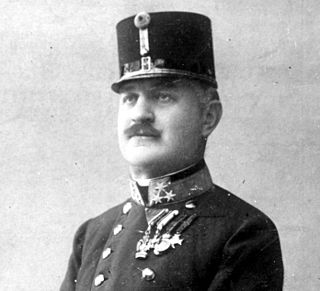
Alfred Redl was an Austro-Hungarian military officer who rose to head the Evidenzbureau, the counterintelligence wing of the General Staff of the Austro-Hungarian Army. He was one of the leading figures of pre-World War I espionage; his term in office was marked by radical innovations and the use of advanced technology to ensnare foreign spies.

Austro-Slavism or Austrian Slavism was a political concept and program aimed to solve problems of Slavic peoples in the Austrian Empire. It was most influential among Czech liberals around the middle of the 19th century. First proposed by Karel Havlíček Borovský in 1846, as an opposition to the concept of pan-Slavism, it was further developed into a complete political program by Czech politician František Palacký. Austroslavism also found some support in other Slavic nations in the Austrian Empire, especially the Poles, Slovenes, Croats and Slovaks.

Lieutenant General Dai Li (Tai Li; Chinese: 戴笠; pinyin: Dài Lì; Wade–Giles: Tai4 Li4; May 28, 1897 – March 17, 1946) was a Chinese spymaster. His courtesy name was Yunong (雨農). Born Dai Chunfeng (Tai Chun-feng; 戴春風) in Bao'an, Jiangshan, Zhejiang province, he studied at the Whampoa Military Academy, where Chiang Kai-shek served as Chief Commandant, and later became head of Chiang's military intelligence agency: the Bureau of Investigation and Statistics (Chinese: 國民政府軍事委員會調查統計局; pinyin: guómín zhèngfǔ jūnshì wěiyuánhuì diàochá tǒngjìjú, or "jūntǒng" (軍统) in short) of Republican China (1912-1949).
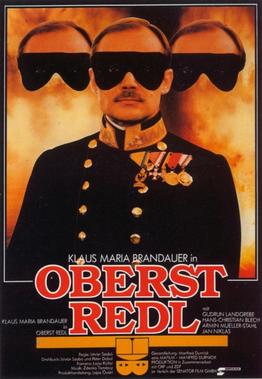
Colonel Redl is a 1985 biographical drama film by Hungarian director István Szabó. The plot, set in the period before World War I, follows the rise of Alfred Redl, an officer in the Austro-Hungarian Empire. Redl, who comes from a humble background, enters military school as a boy and an illustrious military career comes his way by virtue of his loyalty to the crown. He is appointed the head of an intelligence-gathering unit, but his attraction to men eventually causes his downfall.
A Patriot for Me is a 1965 play by the English playwright John Osborne, based on the true story of Alfred Redl. The controversial refusal of a performance licence by the Lord Chamberlain's Office played a role in the passage of the Theatres Act 1968.
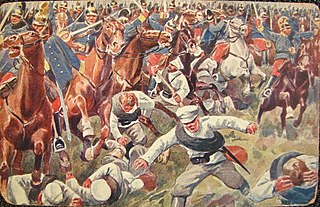
The Battle of Kraśnik started on August 23, 1914, in the province of Galicia and the adjacent areas across the border in the Russian Empire, in northern Austria, and ended two days later. The Austro-Hungarian First Army defeated the Russian Fourth Army. It was the first victory by Austria-Hungary in World War I. As a result, the First Army's commander, General Viktor Dankl, was (briefly) lauded as a national hero for his success. The battle was also the first of a series of engagements between Austria-Hungary and Russia all along the Galicia front.

František Moravec CBE was the chief Czechoslovak military intelligence officer before and during World War II. He moved to the United States after the war.

Dmitri Fyodorovich Polyakov was a Major General in the Soviet GRU during the Cold War. According to former high-level KGB officer Sergey Kondrashev, Polyakov acted as a KGB disinformation agent at the FBI's New York City field office when he was posted at United Nations headquarters in 1962. Kondrashev's post-Cold War friend, former high-level CIA counterintelligence officer Tennent H. Bagley, says Polyakov "flipped" and started spying for the CIA when he was reposted to Rangoon, Moscow, and New Delhi. Polyakov was suddenly recalled to Moscow in 1980, arrested, tried, and finally executed in 1988.

The k.u.k. Evidenzbureau was the directorate of military intelligence of the Austro-Hungarian Empire, headquartered in Vienna, Austria.
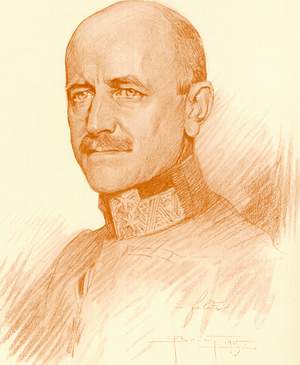
Colonel Maximilian Ronge was the last director of the Evidenzbureau, the directorate of military intelligence of the Austro-Hungarian Empire. Ronge played a key role in the 1913 exposure of Col. Alfred Redl as a double agent.
Theodore Maly was a former Roman Catholic priest and Soviet intelligence officer during the 1920s and 1930s. He lived illegally in the countries where he worked for the NKVD and was one of the Soviet Union's most effective spymasters.

Bilateral relations exist and existed between Austria and Russia and their predecessor states. Since October 1955, the Republic of Austria maintains the constitutionally-mandated status of neutrality; the country is a founding member of the Organisation for Economic Co-operation and Development (OEEC). Austria joined the EU in 1995. Russia is a permanent member of the United Nations Security Council, a partner of ASEAN, a member of the Shanghai Cooperation Organisation (SCO), the G20, the Asia-Pacific Economic Cooperation (APEC), the Organization for Security and Co-operation in Europe (OSCE), as well as the leading member state of the Commonwealth of Independent States (CIS), the Collective Security Treaty Organization (CSTO), and the Eurasian Economic Union (EEU). Both countries are members of the Organization for Security and Co-operation in Europe and the World Trade Organization (WTO).

Gu Shunzhang, born Gu Fengming was an early leader, spymaster, and defector of the Chinese Communist Party (CCP). Sent to Soviet Russia to train in espionage, Gu was chosen by Zhou Enlai to lead the CCP's first intelligence service, the Central Special Branch. After he was captured by the Kuomintang (KMT), Gu defected and revealed to the KMT intelligence all he knew of Zhou Enlai's underground communist spy network earning him a reputation as "the most dangerous traitor in the history of the CCP."
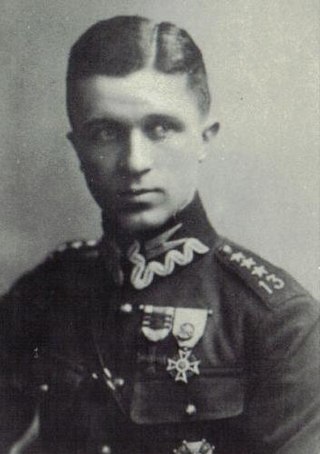
Jerzy Ksawery Franciszek Sosnowski was a Major in Section II ("Dwójka") of the Polish General Staff and a Polish spymaster in the Weimar Republic and Nazi Germany (1926–1934), where he used the pseudonyms Georg von Nałęcz-Sosnowski and Ritter von Nalecz.
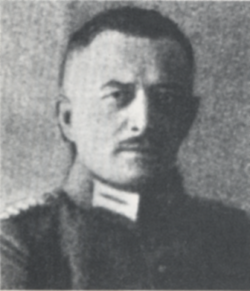
General Walter Nicolai was the first senior IC (intelligence) officer in the Imperial German Army. He came to run the German military intelligence service, Abteilung IIIb, and became an important pro-war propagandist in Germany during the First World War of 1914–1918. According to Höhne and Zolling, he helped to found the German Fatherland Party in 1917.

Arthur Freiherr Giesl von Gieslingen was an Austrian general officer during the First World War.

The Affair of Colonel Redl is a Czech drama film directed by Karel Anton. German version of the movie The Case of Colonel Redl was released in 1931. The film is considered lost.
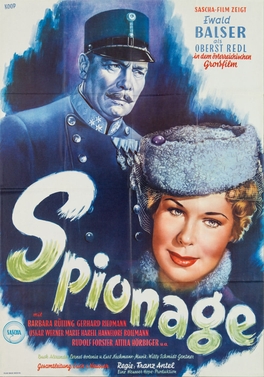
Espionage is a 1955 Austrian historical spy drama film directed by Franz Antel and starring Ewald Balser, Barbara Rütting and Gerhard Riedmann. It was shot at the Sievering Studios and on location in Vienna. The film's sets were designed by the art director Felix Smetana. It was based on the real story of Alfred Redl, an officer serving with Austrian Military Intelligence who was also secretly spying for the hostile Russian Empire before the First World War.
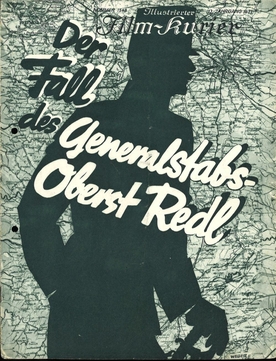
The Case of Colonel Redl is a 1931 Czechoslovak spy drama film directed by Karl Anton in German language. It stars Theodor Loos, Lil Dagover and Otto Hartmann. It was co-production between the Prague-based companies Elektafilm and Sonor Film. A separate Czech-language version The Affair of Colonel Redl was also shot at the same time. It was based on a 1924 novel of the same title by Egon Erwin Kisch, based on the story of Alfred Redl.

















